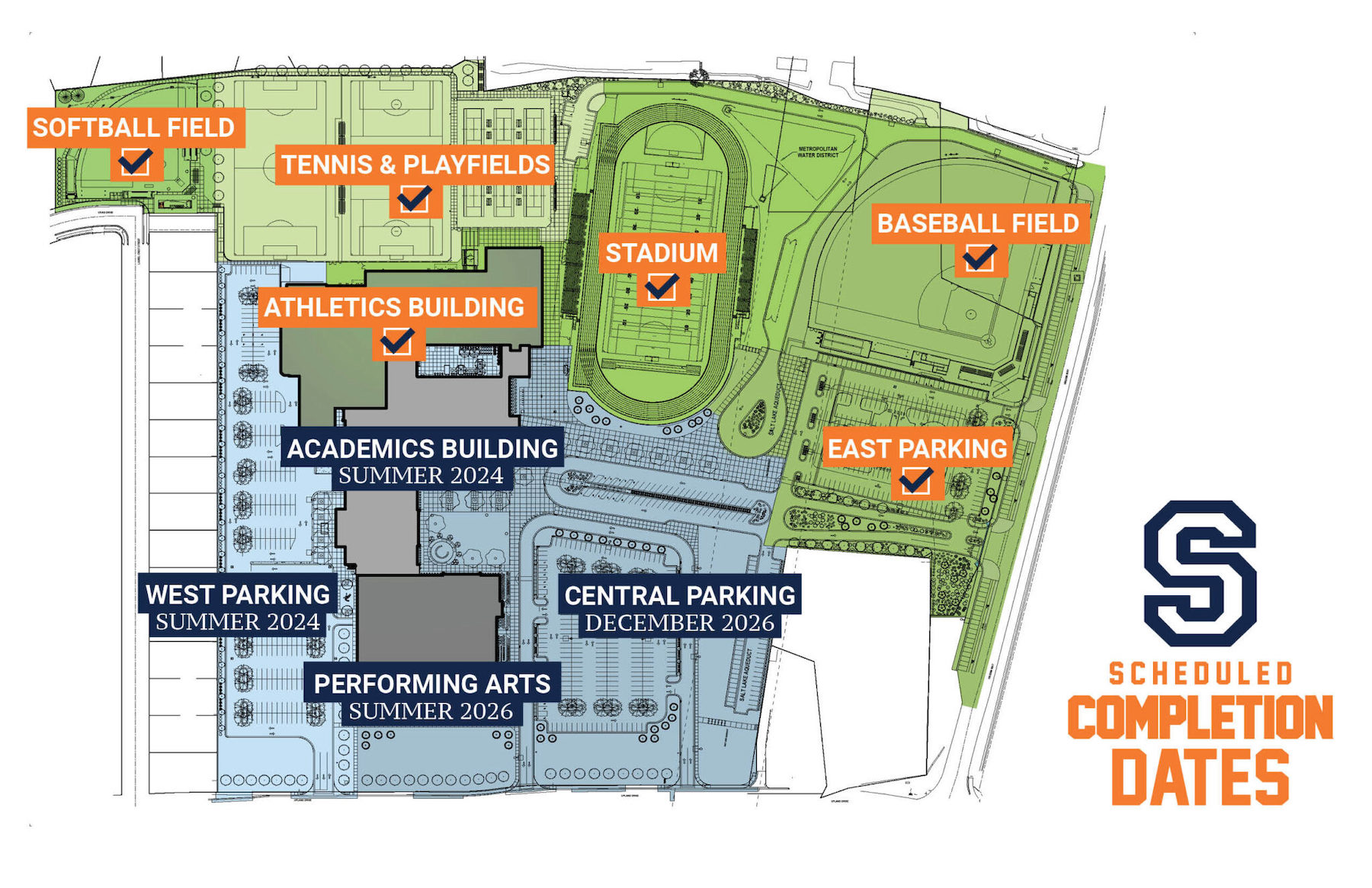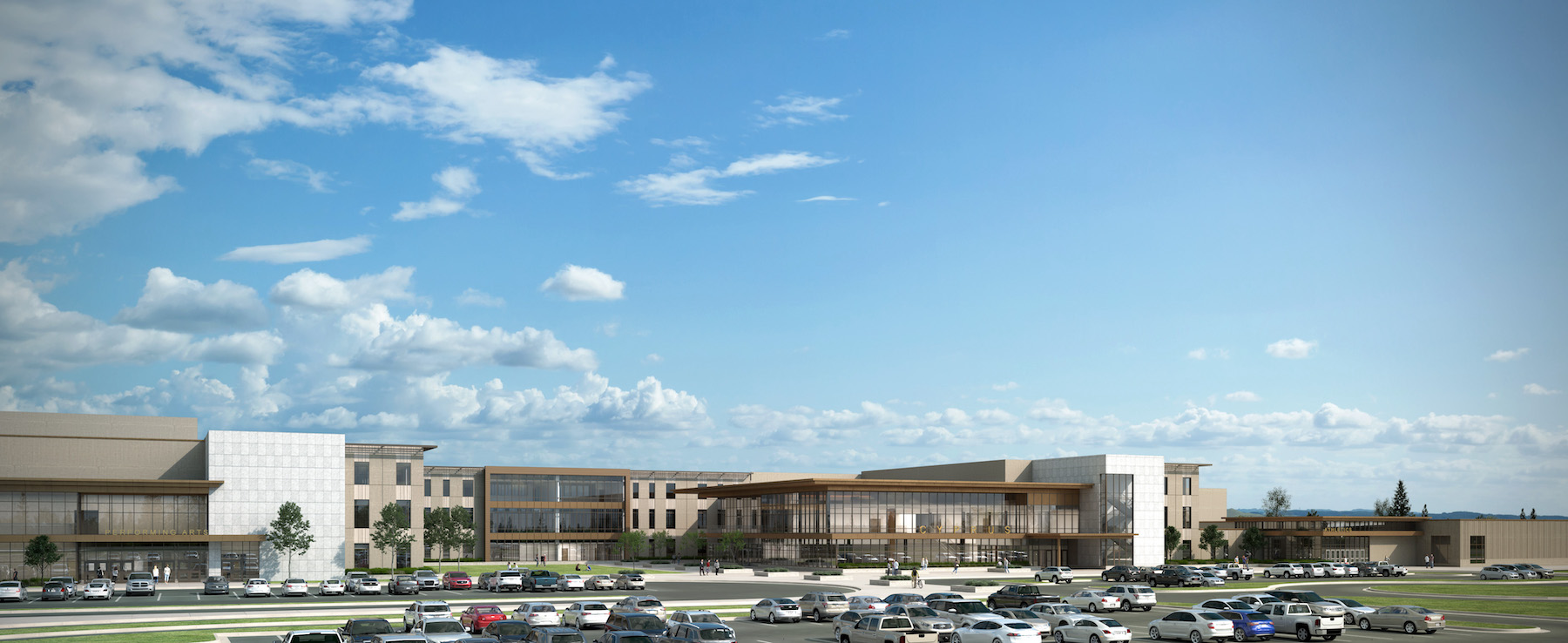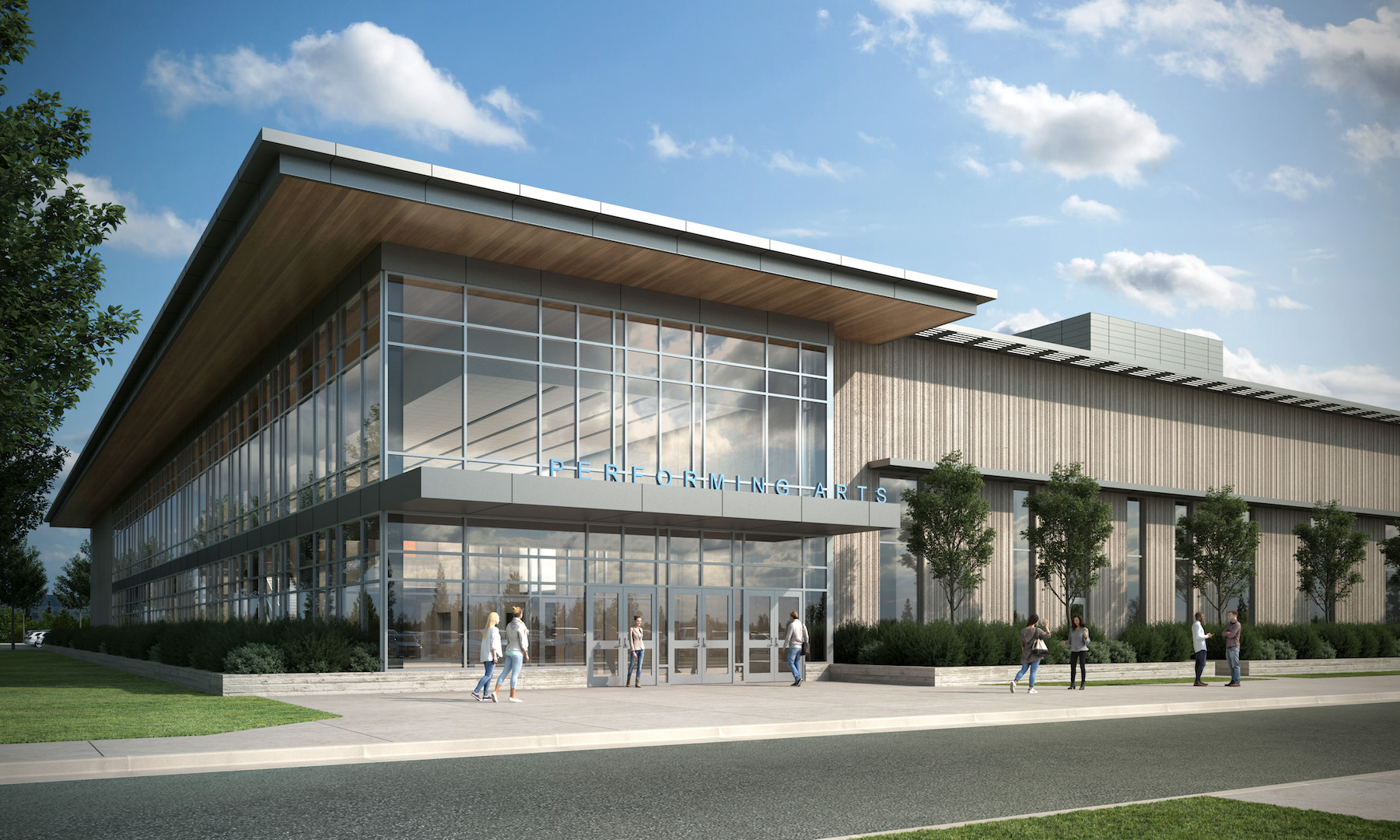Granite School District in Utah’s Salt Lake Valley has more than 60,000 students, making it one of the nation’s largest. In 2017, the District approved a $238 million bond that would fund the construction and renovation of 31 schools over a 10-year period.
Skyline High School and Cyprus High School were among those that would be replaced with modern buildings. Just how modern, though, was a point of debate between the District and the two firms hired to design the new construction, according to the lead architect on these projects.
First, some history about Skyline High School, located in Millcreek, Utah: Its current building opened in 1962, and it serves 2,156 students. That original is being replaced by a 427,000-sf school whose capacity will be between 2,200 and 2,300 students. It will have 51 classrooms, 13 labs, 11 specialized labs, abundant collaborative spaces, and six special-education resource teams. So far, the new campus’ pool, gym, and sports fields are completed. The academic building will be move-in ready this summer, at which point demolition on the old school will commence. After that, the new school’s auditorium and fine-arts center will be built, along with bus routes and parking areas. The whole project is scheduled for completion by December 2026.

Back to the drawing board
Granite School District hired Fanning Howey to design the new Skyline High School in August 2017. Michael Hall, the firm’s Senior Project Executive and Education Planner, says that the District insisted, for accountability reasons, that Fanning Howey and Naylor Wentworth Lund, another design firm hired for this project, work under a joint venture agreement. (The joint venture is called Elevate.)
But when the firms presented their renderings, the District “reacted negatively,” recalls Hall. He believes that the community thought the design––which emphasized glass exterior walls throughout––strayed too far from a nostalgic ideal. “It wasn’t what they remembered the school had been,” he says. So the two firms restarted from scratch in 2019, and while glass is still prominent in the revised renderings’ interior and exterior design, “it wasn’t the vision we started with.”
Hall, who is based in Ohio, says he does a Zoom call every two weeks with his team, “and the first thing I ask is ‘is everyone happy?’”
Ironically, the District and community signed off on the design team’s renderings for the new 508,000-sf Cyprus High School, located in Magna, Utah, without much pushback. The Cyprus project is scheduled for completion in 2025.
Embracing space flexibility

The $168 million Cyprus project, built on what had been an empty field with a 40- to 50-ft slope, required $4 million in soil compaction to support the new construction. The $174 million Skyline campus is more tightly configured, says Hall.
Another difference is how each project is being delivered. The old schools have been kept open during construction. Hughes General Contractors is building Skyline as its Construction Manager, whereas Westland Construction is building Cyprus as a General Contractor. To keep the design team in the loop, Westland has been sending Hall drone imagery of Cyprus’ progress every Monday, which prompted Hughes to send drone pictures of Skyline regularly, too.
What binds these two projects is their embrace of collaboration and design flexibility. At a time when some school districts and developers “still want egg crates” for classroom design, Hall lauds the Granite School District for devoting up to 900 sf for each of the numerous collaborative spaces included in Skyline and Cyprus. Glass walls that surround these spaces not only let more natural light into the adjacent classrooms, but provide safety and security with “adult visual control” of each room.
Skyline’s athletic buildings, which were completed in 2021, at the height of the COVID pandemic, include disinfecting lighting whose luminaires with 405-mm technology kill harmful airborne viruses and bacteria automatically and continuously.
Despite some of the anomalies and challenges these projects presented, Hall says he’s “excited” about how the schools will look. For Hall, who has been semiretired since 2018, Skyline and Cyprus will also be his “swan songs. When these are done, I’m done.”
Related Stories
| Aug 11, 2010
Back to Nature: Can wood construction create healthier, more productive learning environments?
Can the use of wood in school construction create healthier, safer, more productive learning environments? In Japan, there's an ongoing effort by government officials to construct school buildings with wood materials and finishes—everything from floors and ceilings to furniture and structural elements—in the belief that wood environments have a positive impact on students.
| Aug 11, 2010
High School in a Hurry
One of the more compelling arguments for charter schools is their theoretical ability to streamline decision making. Eliminate all those layers of bureaucratic fat that clog the arteries of most public school systems, the argument goes, and decisions can be made to flow much more smoothly, even when it comes to designing and building a major school project.
| Aug 11, 2010
Bronze Award: Garfield High School, Seattle, Wash.
Renovations to Seattle's historic Garfield High School focused mainly on restoring the 85-year-old building's faded beauty and creating a more usable and modern interior. The 243,000-sf school (whose alumni include the impresario Quincy Jones) was so functionally inadequate that officials briefly considered razing it.
| Aug 11, 2010
Managing the K-12 Portfolio
In 1995, the city of New Haven, Conn., launched a program to build five new schools and renovate and upgrade seven others. At the time, city officials could not have envisioned their program morphing into a 17-year, 44-school, $1.5 billion project to completely overhaul its entire portfolio of K-12 facilities for nearly 23,000 students.
| Aug 11, 2010
Financial Wizardry Builds a Community
At 69 square miles, Vineland is New Jersey's largest city, at least in geographic area, and it has a rich history. It was established in 1861 as a planned community (well before there were such things) by the utopian Charles Landis. It was in Vineland that Dr. Thomas Welch found a way to preserve grape juice without fermenting it, creating a wine substitute for church use (the town was dry).
| Aug 11, 2010
School Project Offers Lessons in Construction Realities
Imagine this scenario: You're planning a $32.9 million project involving 112,000 sf of new construction and renovation work, and your job site is an active 32-acre junior-K-to-12 school campus bordered by well-heeled neighbors who are extremely concerned about construction noise and traffic. Add to that the fact that within 30 days of groundbreaking, the general contractor gets canned.
| Aug 11, 2010
High Tech High International used to be a military facility
High Tech High International, reconstructed inside a 1952 Navy metal foundry training facility, incorporates the very latest in teaching technology with a centerpiece classroom known as the UN Theater, which is modeled after the UN chambers in New York. The interior space, which looks more like a hip advertising studio than a public high school, provides informal, flexible seating areas, abunda...
| Aug 11, 2010
High-Performance Modular Classrooms Hit the Market
Over a five-day stretch last December, students at the Carroll School in Lincoln, Mass., witnessed the installation of a modular classroom building like no other. The new 950-sf structure, which will serve as the school's tutoring offices for the next few years, is loaded with sustainable features like sun-tunnel skylights, doubled-insulated low-e glazing, a cool roof, light shelves, bamboo tri...
| Aug 11, 2010
Special Recognition: Pioneering Efforts Continue Trade School Legacy
Worcester, Mass., is the birthplace of vocational education, beginning with the pioneering efforts of Milton P. Higgins, who opened the Worcester Trade School in 1908. The school's original facility served this central Massachusetts community for nearly 100 years until its state-of-the-art replacement opened in 2006 as the 1,500-student Worchester Technical High School.
| Aug 11, 2010
BIM school, green school: California's newest high-performance school
Nestled deep in the Napa Valley, the city of American Canyon is one of a number of new communities in Northern California that have experienced tremendous growth in the last five years. Located 42 miles northeast of San Francisco, American Canyon had a population of just over 9,000 in 2000; by 2008, that figure stood at 15,276, with 28% of the population under age 18.







